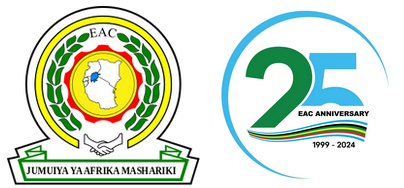Constraints and challenges of the EAC Agriculture sector
The progress made and achievements registered are a result of dedicated financial support from development partners, ownership and buy-in from EAC Partner States as well as leveraging of resources and technical expertise through strategic partnerships.
The slow pace in the in domestication and implementation of instruments adopted at the regional level is still weak and remains a challenge to be addressed. This can be strengthened through mutual accountability mechanisms and enhanced tracking instruments by the relevant EAC Policy Organs.
Further, overlapping membership across the Regional Economic Communities (EAC, COMESA, IGAD and SADC) is conspicuous. This calls for enhanced inter-RECs coordination and cooperation in order to minimize duplication of similar interventions across Partner/ Member States. This presents an opportunity for RECs to benefit from each other through sharing of information and best practices. To address this challenges, RECs can resolve to adapt and implement regional instruments already adopted by other RECs, for instance, EAC harmonized guidelines for testing and registration of pesticides and other SPS related instruments.
The poor performance of the agricultural sector in the region can also be attributed to the folloiwng factors:
- Technology related factors
- Inadequate research, extension services and training
- Prevalence of pests and diseases
- Nature related factors
- Degradation of natural resources
- Climatic and weather unpredictability
- Cross cutting and cross-sectoral related factors
- High incidence of poverty
- Inadequate social infrastructure
- Gender inequality
These constraints have inhibited the rural economy’s potential to alleviate poverty through employment creation and income generation; meet growing food needs driven by rapid population growth and urbanisation; stimulate overall economic growth, given that agriculture is the most potential lead sector for growth and development; and conserve natural resources.
Despite these challenges, the EAC Secretariat has laid a strong foundation aligned to the key drivers and vehicles of agricultural transformation at the global and continental levels. These include Vision 2050 Pillar on Agriculture, Food Security and Rural Economy and the 6th EAC Development Strategy.
At the global level, EAC Agriculture Sector interventions respond to Sustainable Development Goals (SDGs) while at the continental level they contribute towards delivery of the goals and commitments of the African Union Heads of State June 2014 Malabo Declaration on Accelerated Agricultural Growth and Transformation for Shared Prosperity and Livelihoods.
Expanding, sustaining and strengthening partnerships with relevant institutions will remain crucial in leveraging resources and augmenting the limited capacity challenges that the EAC Secretariat is facing in the department of Agriculture and Food Security.
The need to unlock the potential of private sector cannot be overstated.
The sector can play a catalytical role in facilitating implementation of instruments adopted at the regional level. However, EAC Partner States will be expected to create an enabling environment and provide incentives to attract private sector participation and investments.
